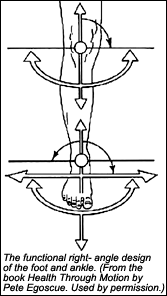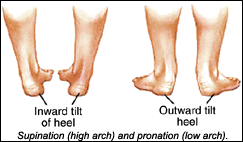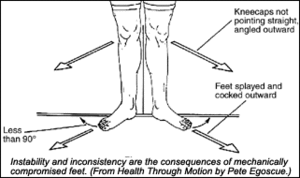Good footwork begins with feet that are fit, functional and mechanically sound.
Pre-existing mechanical problems with the feet can be compounded tenfold when playing golf. The full golf swing requires the transfer of body weight from back foot to front foot. The feet must be able to receive the weight transfer without compromise. Examples of detrimental foot faults are excessive pronation or supination.
Supination and pronation influence the stability of the pivot during the backswing. Seventy-five percent of the body weight transfers directly into the quadriceps of the back leg at the top of the backswing. The back foot must be able to support this weight transfer, then push the weight to the front foot during the downswing.
Additionally, a golfer walks an average of three to five miles over a period of four to five hours while completing 18 holes of golf. With conditions of supination, pronation, bunions or hammertoes beneath the ankle, the golfer risks chronic instability when attempting to transfer the weight during the golf swing or walk without compromise.
Recommendations
Many diversified adjusting techniques work well to reduce subluxations in the ankles and feet. There also are several excellent seminars to choose from if your technique needs some polishing.
Orthopedic appliances (supportive shoe inserts) are recommended for any golf patient diagnosed with chronic mechanical instability of the knee, ankle or feet.
(Note: Many professional golfers now use orthotics. One study reports that regular use of orthotics will increase the player's club head velocity an average of 3.5 mph, which translates to an additional 10-15 yards of distance off the tee!)
Jeffry Blanchard, DC
Encinitas, California
DoctorForGolf.com
Dr. Jeff Blanchard is a practicing chiropractor who competes as a golf professional. He is the author of The PGA Professionals' Golf Injury Desk Reference (2007). For questions or comments regarding this article, contact Dr. Blanchard at 805-772-8298 or .







